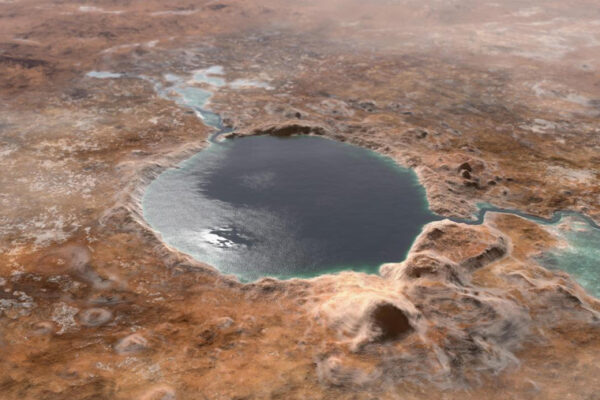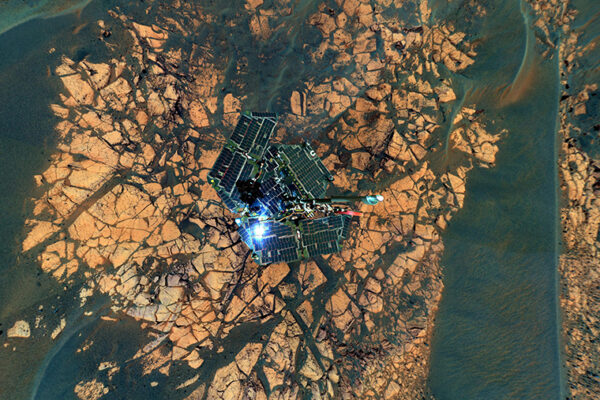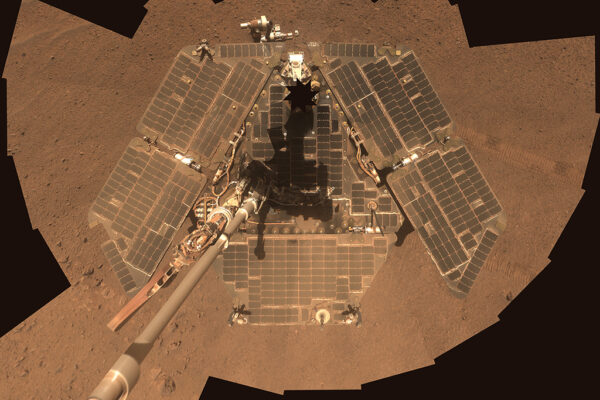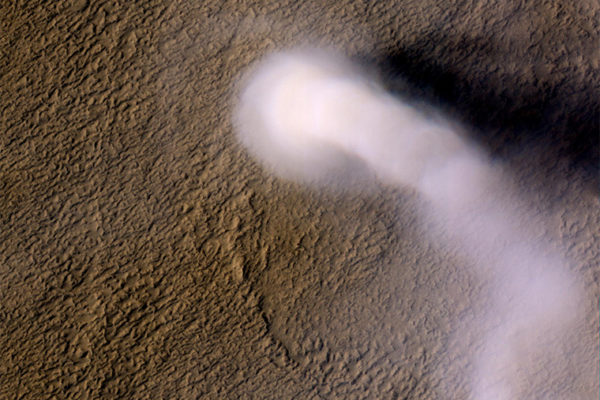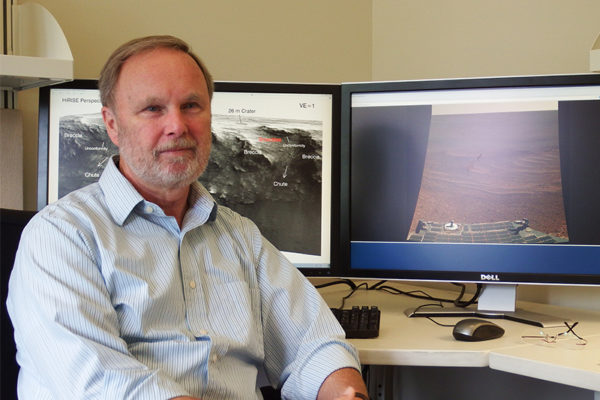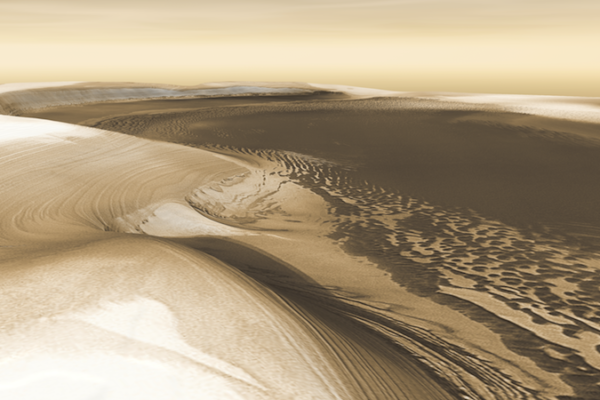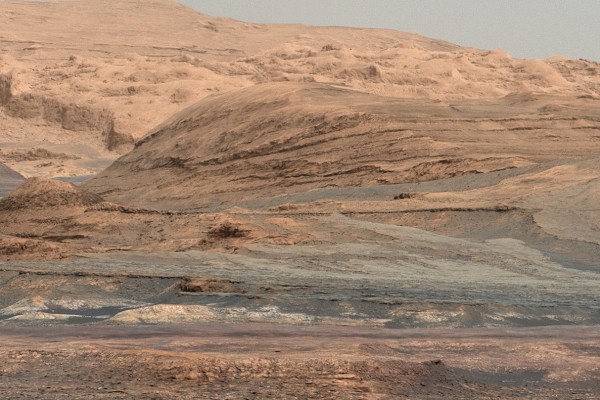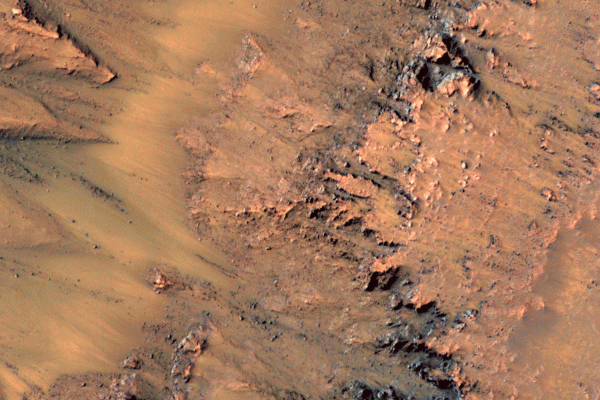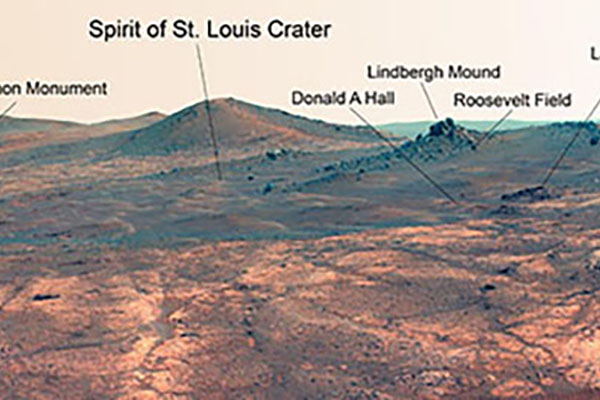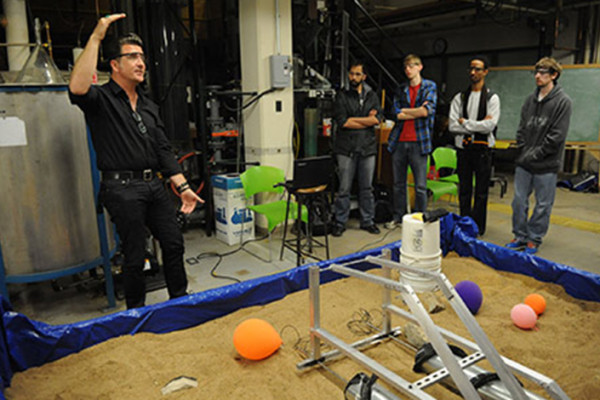New tech can get oxygen, fuel from Mars’ salty water
A new electrolysis system that makes use of briny water could provide astronauts on Mars with life-supporting oxygen and fuel for the ride home, according to engineers at the McKelvey School of Engineering at Washington University in St. Louis, who developed the system.
Rover retrospective
RIP Mars rovers Spirit and Opportunity. But the geosciences data they collected will live on at Washington University, under the care of a team of archivists in Arts & Sciences. The data includes details about both rovers’ every move as well as many images that helped this space mission capture the public’s imagination.
WashU Expert: Mission complete
Ray Arvidson, professor of Earth and planetary sciences and the James S. McDonnell Distinguished University Professor, talks about the end of Opportunity’s longer-than-expected 15-year mission — he was the deputy principal investigator for the Mars exploration rover for NASA.
Electricity in Martian dust storms helps to form perchlorates
Storms help form an important chemical that is highly significant in the search for life on Mars. A team led by Alian Wang of Arts & Sciences created a simulation in the lab that sheds new light on what’s being kicked up by those massive Martian dust devils.
WashUExpert: Organic molecules on Mars
The Curiosity Rover mission found signs of organic materials on Mars dating back about 3.5 billion years, NASA announced June 7. It could be a big deal, said Raymond Arvidson, the James S. McDonnell Distinguished University Professor in Arts & Sciences.
Wandering ice on Mars
Glaciations on Mars are different from those on Earth. During a Martian glacial period, water vapor that would otherwise travel to the north polar cap instead snows out at lower latitudes, where ice then accumulates. Radargrams of the north polar region of Mars record the most recent mid-latitude Martian glacial period and the regrowth of the polar ice since then.
Habitable Mars topic of 2016 McDonnell Distinguished Lecture
John P. Grotzinger, the scientist who led the Mars Rover Curiosity mission that discovered evidence of water in 2012, will deliver the McDonnell Distinguished Lecture on Wednesday, March 2, at Washington University in St. Louis.
WashU Expert: Arvidson on news that water still flows on Mars
NASA announced earlier this week that dark streaks that appear on Martian slopes in the summer, lengthen and then fade as winter approaches are seeps of salty water. The news that Mars still has surface water again raised hopes that it may have life. It will take thoughtful mission planning to find out, says Washington University in St. Louis Mars expert Ray Arvidson, PhD.
Spirit of St. Louis on Mars
The Opportunity rover is currently exploring a Martian crater named the Spirit of St. Louis, after the famous aircraft — which was in turn named in honor of St. Louis citizens who purchased it for Charles Lindbergh. The mission team picked this naming scheme because Washington University team members spotted a promising target just beyond the crater. As long as the rover remains in the crater, the names will drawn from a list of names related to the famous flight.
Robots on Mars
Before his Assembly Series talk, Adam Steltzner, a NASA engineer in charge of the Mars Curiosity rover landing, met with WUSTL students and discussed their entry for NASA’s Robotic Mining Competition.
View More Stories
